
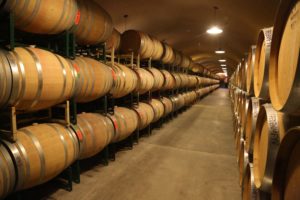
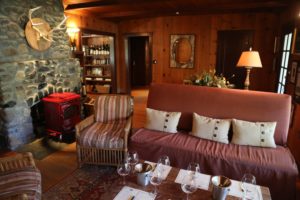 Failla Wines was founded by winemaker Ehren Jordan and Anne-Marie Failla; the winery is named after the middle name of Ehren’s eldest daughter. Today, Ehren is the sole proprietor of Failla Wines. Ehren’s wine making career has been one of learning by doing. Rather than graduating from UC Davis with a degree in Enology and Viticulture, he graduated from George Washington University in Washington DC with a major in Art History and a minor in Classical Archaeology.
Failla Wines was founded by winemaker Ehren Jordan and Anne-Marie Failla; the winery is named after the middle name of Ehren’s eldest daughter. Today, Ehren is the sole proprietor of Failla Wines. Ehren’s wine making career has been one of learning by doing. Rather than graduating from UC Davis with a degree in Enology and Viticulture, he graduated from George Washington University in Washington DC with a major in Art History and a minor in Classical Archaeology.
While in college one of his fraternity brothers told him about a job working at what he described as a liquor store; this was Bell Wine & Spirits in the center of Washington D.C. (founded 1933) where Erin took a job in the back of the shop stocking wine shipments. Soon he was promoted to the front of the shop where he was introduced to a number of fine wines around the world.
After graduating from college, he moved to Colorado where he skied during the day and worked in restaurants at night furthering his wine education. His introduction to Napa Valley was through one of the restaurants he worked at when he accompanied some of the employees on a trip to Napa. His first job in the valley was as a tour guide at Joseph Phelps Winery; while at Phelps, he also worked in their cellar and helped with sales.
Ehren is often associated with Turley Wine Cellars; that is because he spent 18 years at Turley helping create some of their well-regarded Zinfandels and other wines as their General Manager and Director of Winemaking.
The first Failla wine was from the 1998 vintage, a tiny amount of Viognier and Syrah bottled under the label Failla-Jordan. With part of their name conflicting with Jordan Winery in Sonoma County, they soon dropped Jordan. They opened their tasting room along the Silverado Trail in October of 2006; our first visit was the following year.
Until they purchased this property in 2004, they were a “virtual” winery without a tasting room or winery of their own and made their wines at other wineries including Turley and Neyers. The winery is located almost directly across from the popular Rombauer Winery (look for the large U.S. flag). The only signage from Silverado Trail is their painted mailbox with the address listed. They share the very first part of the driveway with their neighbor, Hunnicutt Winery. Parking used to be a gravel lot with access behind the tasting ‘lodge’, but since plans call for expanding their cave, parking and the main entrance have been moved to the front of the cottage.
Jordan offers a number of tasting experiences held on various parts of the property including inside the wine cave, weather permitting outside on tables under the redwoods or inside what is referred to as The Lodge. Because of the various tasting spaces, often several tastings will be going at any one time and during our previous visits, guests from multiple parties were combined in one tasting. The interior of the lodge feels like a mountain cabin with knotty pine and a stone fireplace – one could almost be tasting up at Lake Tahoe rather than in the hills of Napa Valley. A side room with a thick piece of wood sitting on top of two wine barrels serves as the tasting counter or for a more personal tasting (small groups only) you can sit down with your host.
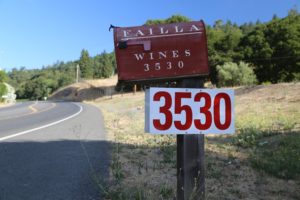
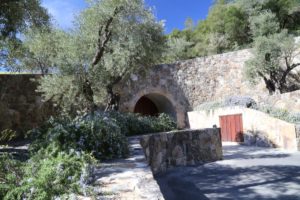
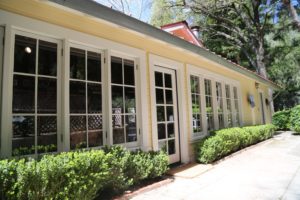 This is a historic property. The Silverado Trail was originally built in 1852 and was the first permanent north south road in Napa Valley. You can even see parts of the old Silverado Trail which used to run through the property. We were told the famous stagecoach robber, “Black Bart” was actually apprehended on site in 1883.
This is a historic property. The Silverado Trail was originally built in 1852 and was the first permanent north south road in Napa Valley. You can even see parts of the old Silverado Trail which used to run through the property. We were told the famous stagecoach robber, “Black Bart” was actually apprehended on site in 1883.
Visitors may see apple trees planted on one of the slopes; these were left from previous owners who planned on producing apple cider using the small wooden building next to the entrance to the cave. Ehren is originally from Pittsburg, and it is obvious from the sign on this building that he personally hung here that this is “Steelers country”.
The 12,000 square foot wine cave was used for the first time during the 2008 harvest. Ehren uses a variety of different sized fermentation vessels including concrete (eggs); a number of these are located throughout the various parts of the cave, oak barrels and stainless-steel tanks. He also uses larger wooden casks (not often seen in Napa wineries).
Visitors to the 10-acre property might be surprised the site is not covered in vineyards. There are two reasons why grapes are not planted here: the property is mostly steep hillside land and Napa County prohibits new vineyards from being planted on slopes greater then 30% and the grapes that grow here best are Bordeaux red varietals – and are varieties that Failla does not make wine from.
With that said, a tiny old-school dry-farmed head-pruned hillside Zinfandel vineyard that Ehren planted in 2011 is located above the cave. With its small footprint and wide spacing, this vineyard only produces a small amount of wine each year. It is a part of Ehren’s Day Collection, a portfolio focusing primarily on cooler weather Zinfandel sites with wines sold through retailers and restaurants.
Ehren creates wines with several philosophies in mind; one is to make wines that make you salivate upon the first taste, and another is to source from cold climate vineyards which tend to have strong marine influences. The Failla wines feature lively acidity, balance and showcase an overall freshness even with older bottlings. As a result, they tend to pair very well with food and are highly age worthy.
Some California Pinot Noirs are built like a race car that never strays from a racetrack – they are linear focusing on showcasing California sunshine in favor of varietal typicity. These are never the Failla wines. We prefer our Pinot Noir to stray a little, to have character, and not be a ‘racecar’ confined to a track.
Typically, their wines are un-fined and unfiltered for maximum color and flavor and fermentation is done using indigenous yeast (rather than inoculated yeasts). The Chardonnays tend to go through malolactic fermentation. The reds see a varying number of stems, including during fermentation based on the quality/ripeness of the fruit and the variety.
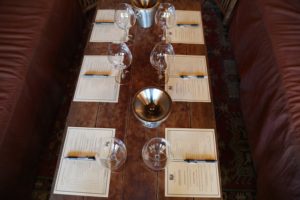
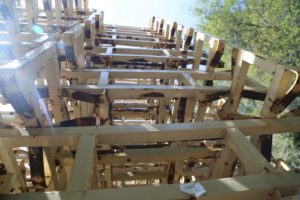
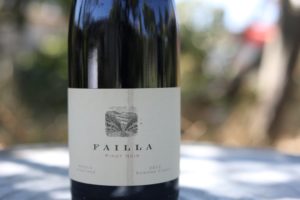 Failla specializes in three wines, Chardonnay, Pinot Noir, and Syrah all sourced from very cool weather vineyards ranging from Sonoma, Napa, Mendocino counties all the way up to Oregon’s Willamette Valley. Arguably Failla is most known for their Pinot Noir -; as of our latest visit, they were producing 17 different wines from this variety (some made only for their wine club members). Failla used to source from one of our favorites far western Sonoma County coastal sites, Whistler Vineyards. If you can find some of these older bottlings, purchase them.
Failla specializes in three wines, Chardonnay, Pinot Noir, and Syrah all sourced from very cool weather vineyards ranging from Sonoma, Napa, Mendocino counties all the way up to Oregon’s Willamette Valley. Arguably Failla is most known for their Pinot Noir -; as of our latest visit, they were producing 17 different wines from this variety (some made only for their wine club members). Failla used to source from one of our favorites far western Sonoma County coastal sites, Whistler Vineyards. If you can find some of these older bottlings, purchase them.
Ehren purchased 40 acres in what is now the Fort Ross-Seaview appellation in Sonoma County in 1995. Helen Turley, a prominent winemaker told Ehren about land that was for sale near her Marcassin Vineyard. At the time part of the property was being used for growing marijuana. Ehren eventually had the site planted to grapes and later purchased more land. Today Failla owns 82 acres here of which 11 acres are planted.
This part of Sonoma County is above 1000 feet, typically above much of the fog line which hovers much lower to the coast. Some of the California’s closest vineyards to the coastline are planted here. While the climate is generally cool here (ideal for growing Pinot Noir), their vineyard actually receives quite a bit of sunshine throughout the growing season due to its elevation.
Failla currently owns 5 individual vineyard properties, three in Sonoma County, one in Oregon and their winery estate.
Select Wines
For a relatively small winery they produce a wide diversity of wines from both estate properties and growers they purchase grapes from.
Whites
The 2022 Failla Chenin Blanc Olivet Ranch, Russian River Valley is medium gold; a diversity of aromas greet the nose including of yellow apple, honeysuckle, passion fruit, ginger, chamomile, and some citrus driven scents including lime and lemon verbena. A shout out here to Coombsville, Napa Valley based ERDA Tea where we were first introduced to their dried lemon verbena leaves. We are very comfortable using the word intense to describe the this wine’s aromatic character. Lightly textured, but offering plenty of flavor, the palate delivers notes of tangelo, not fully ripe kiwi, lemon juice, honeydew melon on the greener side and mint. The finish is energetic and brightly lit from its acidity. Mouth watering. Balanced. We spend several months of every year in Thailand; we are going way out on a limb here for most palates, but we would love the company of this wine with Goong Chae Nam Pla, raw shrimp with raw garlic, bitter melon slices, mint and a spicy nam prik dipping sauce.
The 2021 Failla Sonoma Coast Chardonnay is medium to deep gold in color; honeyed and sweetly fruited aromas including honey harvested straight from the hive – this lovely aromatic reminds us that we need to eventually replace our bee hives which burned in the fires just north of Calistoga. And there are additional scents of stone fruits: apricot and peach accompanied by apple pie, pineapple and mango. There is a mouthful of flavor here including pear, Golden Delicious apples and some light citrus notes. Lightly textured across the palate; there is no viscous oiliness here that sometimes we find with riper more opulent showings of this variety. And that is refreshing. This is a great example of a fully ripe Chardonnay that is not oaky, buttery or pushing the upper alcohol window for California grown wines from this variety. This wine is a blend of This 100% Chardonnay is a blend of the following Russian River or Green Valley vineyards in Sonoma County: Olivet, Keefer Ranch, and Flood Gate. The grapes are whole-cluster pressed and then fermented using indigenous yeasts. The wine was aged sur lie for 9 months in stainless steel, concrete egg and French oak barrels.
The 2022 Failla Platt Vineyard Chardonnay, Sonoma Coast is deep gold in color; the bouquet is immediately open knitted offering scents of honeycomb, vanilla, creme Brule, honeysuckle, caramel, freshly cored Golden Delicious apple, and plenty of orchard fruits including apricot, canned peach and nectarines. And tropical notes including mango, papaya and baked pineapple. The texture is rounded and supple. On the richly flavored palate there are notes of baked pear, pineapple, mango, yellow apples, and yellow nectarines and a hint of vanilla on the finish. Not oaky or buttery – the palate is brighter than the bouquet would lead one to believe. Lingers refreshing with balanced acidity and immediately begs another sip. This wine drinks exceptionally well in its youth.
Reds
Trousseau is a red variety (not to be confused with Trousseau Gris, which makes a white wine) and originated in eastern France. It is primarily grown in Portugal where it is known as bastardo and used in fortified wines. Some plantings are in Sonoma County and also in Oregon’s Willamette Valley. Our first introduction to this wine from a Napa Valley based producer was Brendel Wines, which blended a small amount of this variety into a red blend. We are not aware of anyone yet growing this in Napa Valley. Failla produced their first ever Trousseau in 2021.
The 2021 Failla Trousseau Russian River Valley is medium ruby in color; our first word was rustic to describe the initial aromas including of damp potting soil, raspberry, blueberry, bramble, wintergreen and mint. Light bodied, and lightly flavored it offers notes of red cherry, currant and cranberry accompanied by a finishing touch of white pepper and dried herbs. The tannins are lightly grainy and outlast the fruit on the brightly lit finish. Energetic but not rambunctious acidity. This variety often results in higher alcohol wines; this wine is not one of those and is a refreshing 13.2%. We would file this in our ‘delicious daily drinker’ category – and the price is right to. Our first thought of what to pair this with was a tomato based pasta or perhaps the wood-fired Spicy Italian Pizza served up daily at Oakville Grocery by the humble Italian pizzaiolo.
The 2022 Failla Pinot Noir Sonoma Coast is medium ruby; our first word to describe its aromatics was earthy but it is also brooding and spicy. It offers scents of rusting iron, red plums, bramble, currant, white pepper, Tonka bean and cedar wood. We let this wine evolve in the glass for 30 minutes; the aromatics remain true to their initial offering. Delicious, is a generic word but it gets the point across very succinctly. That was the first word we wrote to describe the palate. The wine is focused with bright fruit flavors including Rainier cherries, cherry cola, pomegranate, red plum and sarsaparilla. Lingers with a note of dried herbs, white pepper lightly grainy tannins. Balanced beautifully. We want more. We remember the fresh Halibut we caught at Waterfall Resort in south Alaska; we would love roast some of that in the company of this wine.
The 2022 Failla Peay Pinot Noir is medium ruby in color; the bouquet smells elegant and is a union of both spice and fruit. These aromas include sweetly fruited notes of red plum, dark raspberry and cherry accompanied by dried rose petals, white pepper and vanilla. Brightly lit across the palate but simultaneously delicate this bottling offers flavors of raspberry, cherry cola, cranberry, pink peppercorn and a lingering sweetness of vanilla. Its texture offers lightly grainy tannins which are felt more on the front of the palate than the back and persist beyond the fruit on the savory and bright finish. This wine is easy drinking in its youth. Brown meat, Thanksgiving turkey and cranberry sauce please. Or BBQ pork shoulder.
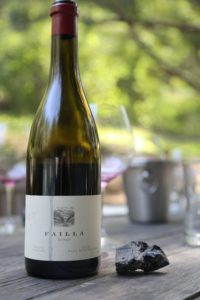 The 2012 Failla Pinot Noir Hirsch Vineyard Sonoma Coast (first tasted 10 years post vintage date) is pale ruby with noticeable brickish color influences. The bouquet shows some bottle bouquet and offers brooding aromas after all this time including earthy smells including of leaves on a forest floor in late fall, mushrooms and barnyard (gamey). Also shows notes of rose petal, violets and dried herbs as the wine evolves in the glass. Let it continue to open – it will transform and reveal additional fruit aromatics. The palate is elegant and still bright with flavors of cranberry, pomegranate and red cherry. This wine is seamless from start to finish with supple tannins which are very well integrated into the finish. This wine still has life ahead of it although it is tasting very well 10 years post vintage date. And we again tried this beauty 12 years post vintage; it continues to hold up very well.
The 2012 Failla Pinot Noir Hirsch Vineyard Sonoma Coast (first tasted 10 years post vintage date) is pale ruby with noticeable brickish color influences. The bouquet shows some bottle bouquet and offers brooding aromas after all this time including earthy smells including of leaves on a forest floor in late fall, mushrooms and barnyard (gamey). Also shows notes of rose petal, violets and dried herbs as the wine evolves in the glass. Let it continue to open – it will transform and reveal additional fruit aromatics. The palate is elegant and still bright with flavors of cranberry, pomegranate and red cherry. This wine is seamless from start to finish with supple tannins which are very well integrated into the finish. This wine still has life ahead of it although it is tasting very well 10 years post vintage date. And we again tried this beauty 12 years post vintage; it continues to hold up very well.
The 2013 Failla Hirsch Vineyard Pinot Noir is medium ruby with a light brickening in color. For reference, we tasted this wine 11 years post vintage. The bouquet offers aromas of cherry cola, raspberry, sarsaparilla, mocha and vanilla. The rounded and supple mouthful offers a creamy texture. On the palate there are flavors of raspberry, root beer, blood orange, currant and red plums. Like other vintages of Failla from this particular vineyard, this wine shows younger than its actual age. The finish is bright and balanced and lingers with a note of white pepper.
Keefer Ranch in the Russian River Valley of neighboring Sonoma County has a special significance to Failla; this vineyard produced the first Pinot Noir that Ehren made bottled under Failla wines; he continues to make wine from here every year. The vineyard owners originally were planning to grow vegetables on the property and sell to local farmer’s markets but when Dr. Robert Keefer took classes on grape growing, he realized the value of their location and decided to grow grapes and sell the fruit (planted in 1988).
The 2015 Failla Keefer Ranch Russian River Valley Pinot Noir features elegant fruit on the bouquet; this is an attractive nose which offers floral notes (dried rose petals) with hints of dust. Bright on the palate, this wine reveals red cherry, currants and a gravelly nuance. Lively acidity along with seamless tannins linger on the supple finish.
Syrah lovers take note; this variety rounds out Failla’s repertoire. The 2015 Failla Estate Vineyard Fort Ross-Seaview Syrah is one of the more ‘elegant’ Syrah’s we have tasted from a Napa Valley based producer which is not a word we typically use with wines made from this variety. The bouquet shows bittersweet dark chocolate aromas, with darker fruits along with being slightly savory. Shows bright fruit both on the bouquet and on the palate with the focus of this wine on the fruit rather than any influence from oak. With lively acidity and good structure, it should be quite age worthy.
—
For more information, to schedule a visit, to purchase wine, or to join one of their wine clubs, visit: www.faillawines.com
Exterior/Vineyard Napa Valley
Cave/Winery, Napa Valley
Hospitality House, Napa Valley
Failla Wines, Oregon
In May of 2018 Failla Wines opened a small tasting room at Zenith Vineyard in the Eola-Amity Hills appellation in Oregon’s Willamette Valley. NOTE: Failla is no longer making their wine or tasting their wines here as they now own their own winery with tastings now hosted on their own property. The current Failla Winery and tasting room is located about 45 minutes from the center of Portland at 9449 SW Old Highway 47. These notes and photography are from our visit to their original tasting room; we will visit their new tasting room as time and budget allows.
Failla used to produce their wines at the sizable winery at Zenith Vineyard through a multi-year lease; Zenith Vineyard uses the large space on site to host a number of events. Failla sources grapes from both the Zenith Vineyard as well as from select other vineyards in this part of the Willamette Valley. Failla also owns 80 acres within a short drive of the tasting room and winery and is where they planted their own grapes. Their property is in the Van Duzer Corridor AVA (granted its AVA status in December of 2018).
Tastings focus on their Oregon grown and produced wines although a number of other wines are also offered for sampling including from both their Napa and Sonoma County vineyard sources. No appointments are needed to visit the tasting room – guests can also request by appointment the Failla Farm to Failla Tasting, Tour & Lunch (enjoyed at one of the tables inside the tasting room).
In addition to their Oregon Pinot Noir wines, one intriguing wine Failla produces is Grüner Veltliner, a dry white wine most known for being grown and produced in Austria. This wine is sourced from grapes first planted in 1968 and the 2017 vintage we tried, offered a very distinctive bouquet.
For more information or to schedule a tasting at their Oregon location, visit: www.faillawinesoregon.com
Failla Wines, Oregon, Original tasting room






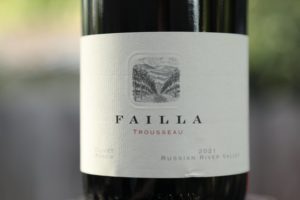
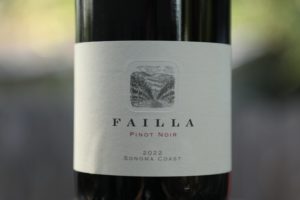
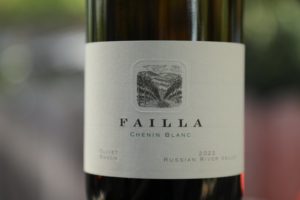
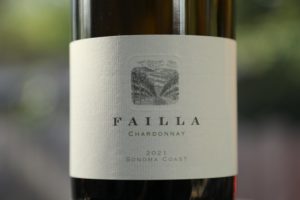
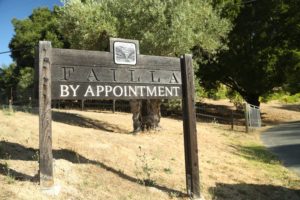
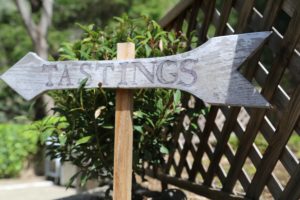
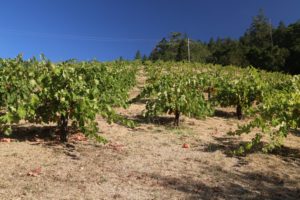
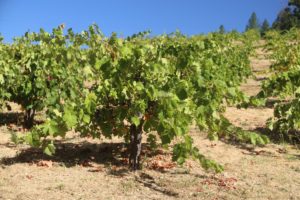
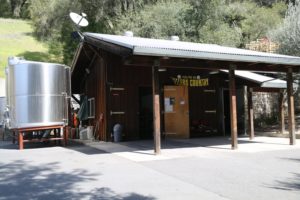
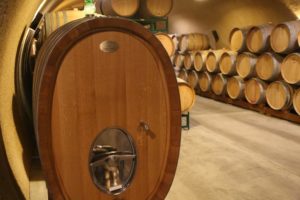
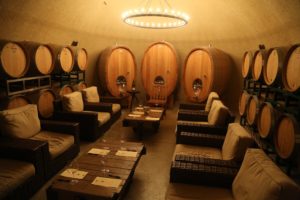
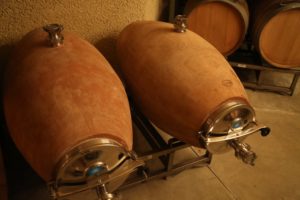
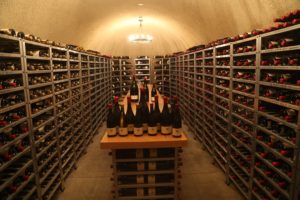



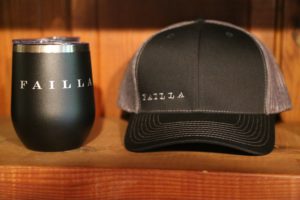

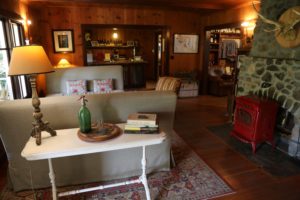

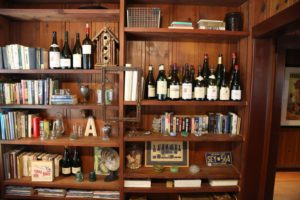

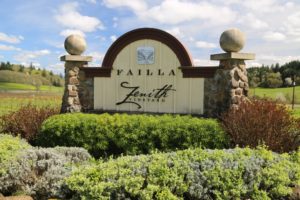

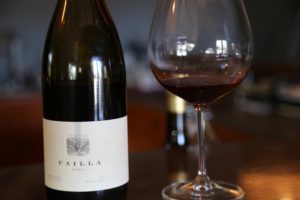
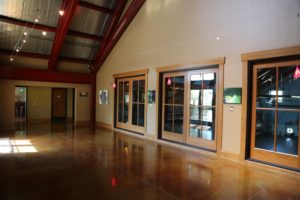

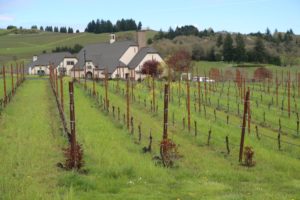
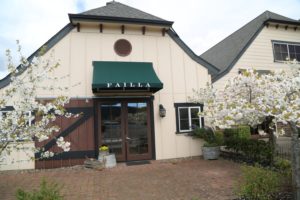
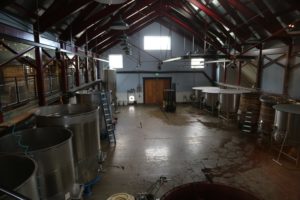
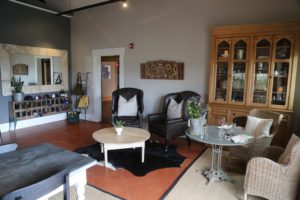
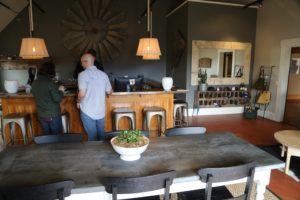
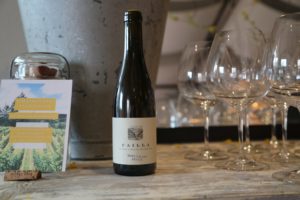

Hi EHREN. I would appreciate to have news from you and family. You are in my memory for ever. Lots of love to you and family . Michèle & Claude Charrayre
Claude – hope you connected with Ehren directly and have a chance to visit the winery the next time you are in Napa or in the Willamette Valley.